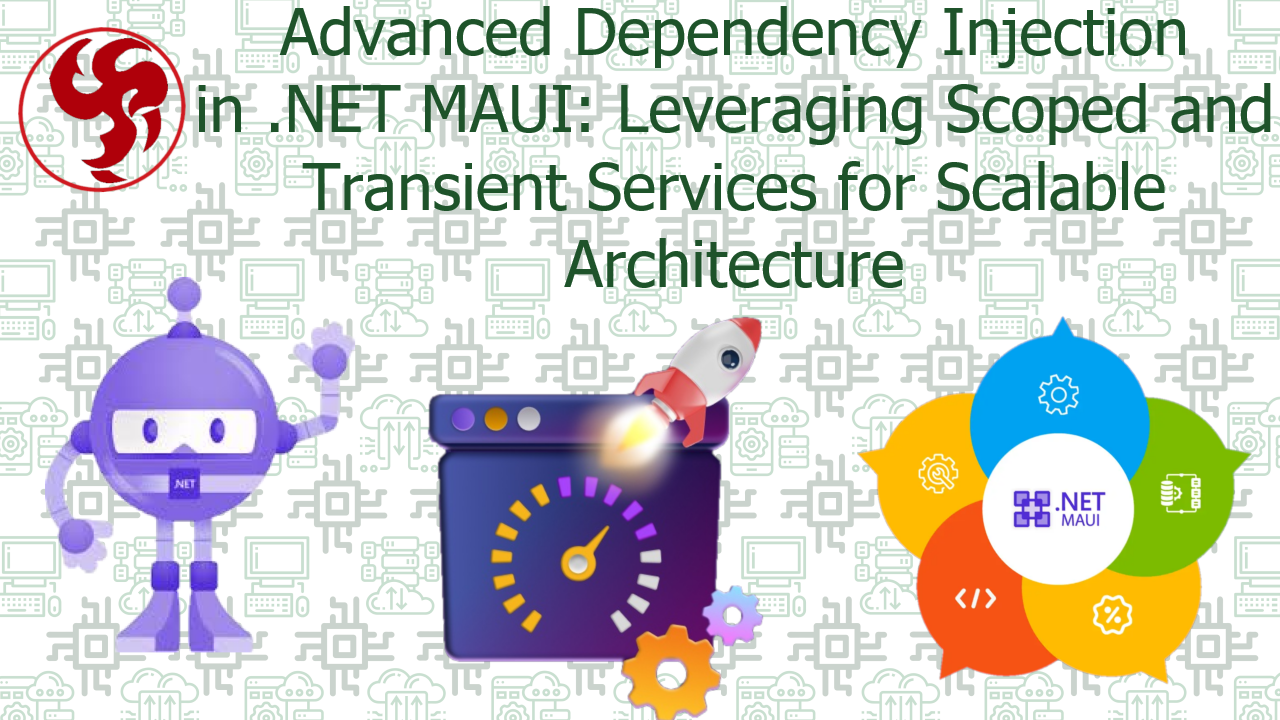Advanced Dependency Injection in .NET MAUI: Leveraging Scoped and Transient Services for Scalable Architecture
Table of Contents
- DI Fundamentals in .NET MAUI
- Service Lifetime Deep Dive
- MAUI's DI Container Architecture
- Registration Patterns
- Advanced Service Lifetimes
- Scoped Services in Depth
- Transient Services Optimization
- Singleton Patterns and Pitfalls
- Architectural Patterns
- Vertical Slice Architecture
- Modular DI Configuration
- Cross-Platform Service Abstraction
- Performance Optimization
- Memory Management
- Startup Performance
- DI Container Benchmarks
- Real-World Scenarios
- Authentication Flows
- Database Connection Management
- Caching Strategies
- Testing Strategies
- Unit Testing with DI
- Integration Testing Patterns
- Mocking Frameworks
- Advanced Topics
- Custom Lifetime Managers
- Child Containers
- AOP with DI
1. DI Fundamentals in .NET MAUI
1.1 Service Lifetime Deep Dive
Key Concepts:
- Transient: New instance per resolution (stateless services)
- Scoped: Single instance per scope (request/session)
- Singleton: Single instance per container (application lifetime)
1.2 MAUI's DI Container Architecture
.NET MAUI uses Microsoft.Extensions.DependencyInjection with enhancements:
Container Hierarchy:
- Root Provider: Singleton services
- Scope Providers: Scoped services
- Transient Factory: Always creates new instances
2. Advanced Service Lifetimes
2.1 Scoped Services in Depth
Implementation Pattern:
Common Use Cases:
- User session management
- Database transaction units
- Request-specific caching
Scoped Service Example:
2.2 Transient Services Optimization
Memory Optimization Pattern:
When to Use:
- Stateless utility services
- ViewModel dependencies
- Pure functions
3. Architectural Patterns
3.1 Vertical Slice Architecture with DI
Module Registration:
3.2 Cross-Platform Service Abstraction
Shared Interface:
4. Performance Optimization
4.1 Memory Management
Leak Prevention Checklist:
✔ Avoid capturing scoped services in singletons
✔ Implement IDisposable for scoped resources
✔ Use weak references for event subscriptions Diagnostic Tools:
4.2 Startup Optimization
Lazy Initialization Pattern:
Benchmark Results:
| Approach | Memory (MB) | Init Time (ms) |
|---|---|---|
| Direct | 15 | 2 |
| Lazy | 12 | 1 |
| Factory | 14 | 3 |
5. Real-World Scenarios
5.1 Authentication Flow
DI Configuration:
5.2 Database Connection Management
Scoped Unit of Work:
6. Testing Strategies
6.1 Unit Testing with DI
Test Setup:
6.2 Integration Testing
Test Host Builder:
7. Advanced Topics
7.1 Custom Lifetime Managers
Session-Based Lifetime:
7.2 Aspect-Oriented Programming
DI-Powered AOP:
Conclusion
This guide has explored advanced DI patterns in .NET MAUI with practical implementations. Key takeaways:
- Choose lifetimes carefully - Match service lifetimes to usage patterns
- Architect for testability - Leverage DI for better test isolation
- Monitor performance - Profile memory and initialization overhead
- Embrace modularity - Organize services by feature domains
